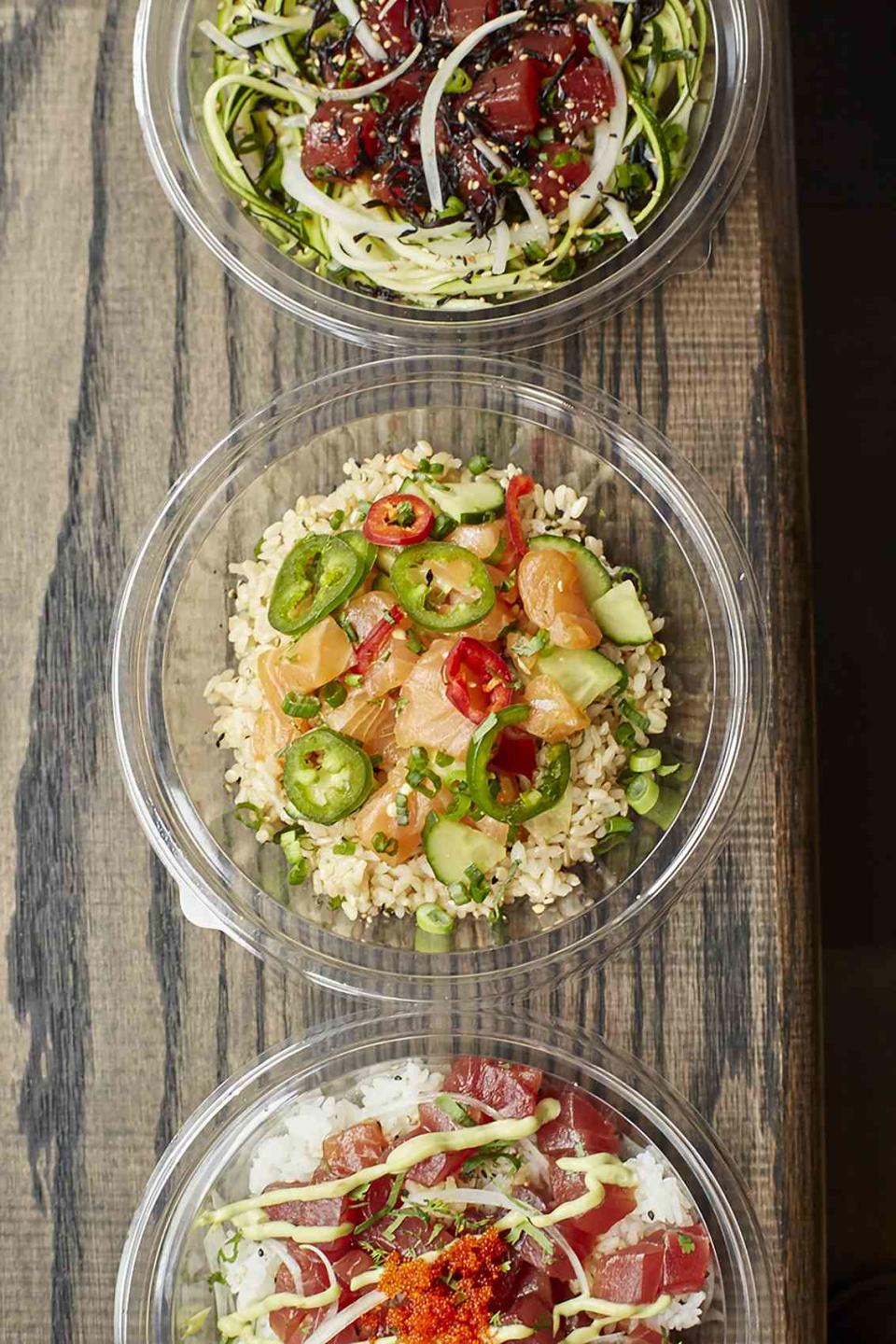Ahi Poke Explained, Plus How to Make a Delicious Poke Bowl
Imagine sushi meets the burrito bowl. Here's everything you need to know about this trendy raw tuna dish.

A long-time popular favorite in Hawaii, restaurants and food trucks dedicated to ahi poke have recently been popping up all across the mainland. If you're curious to know what the buzz is all about (but don't have a poke restaurant in your neighborhood yet), there's good news: It's quite easy to make poke at home—no sushi mat required. Here's what it is and how to make it.
What Is Ahi Poke?
A classic Hawaiian preparation, poke (pronounced poh-kay) is a salad of cubed raw fish—traditionally ahi (yellowfin tuna) but also made with salmon, tofu, or even watermelon—marinated in sesame oil and soy sauce.
Poke can be eaten on its own or as a bowl atop white rice, noodles, or even spiraled vegetables and then topped with just about anything. In other words, customization is the name of the game.
But why has this dish become so popular? "Sushi made people comfortable with eating high-quality raw fish," explains Drew Crane, who owned Wisefish Poké, a New York City-based seafood shop. "And healthy bowls are so big right now. It just made sense for the trend to catch."
Related:Sushi, Crudo, or Ceviche? Here's Your Guide to Raw Seafood—And How to Make Each Dish
What You Need to Make Poke Bowls at Home
Fresh fish (yellowfin tuna, salmon) or a vegetarian option (tofu, beets, or portobellos)
Paring knife
Sharp chef's knife
Sesame oil
Covered container or zippered plastic bag
Medium bowls (for serving)
Cooked short grain sushi rice (or other base)
Toppings (various options)
Chopsticks (or utensils of choice)
Steps
Choose the fish
"Sushi-grade” is an unregulated term, so make sure to ask your fishmonger (or whoever is at your grocer's fish counter) for the freshest fish they have. If you don’t have access to fresh fish, consider buying individually quick-frozen fillets.
Center-cut yellowfin is most commonly used for poke, but other large fish (like salmon) also work wonderfully. Just make sure your fillet is wide and thick enough to trim into 1-inch cubes. Alternatively, small shellfish like scallops and shrimp are delicious options.
Don't do meat? For a delicious vegetarian poke, you can marinate tofu, beets, or portobello mushrooms the same way you would fish.
Prepare the fish
Use a paring knife to remove any white parts or stringy bits from the fillets. (They can make the fish chewy and hard to eat.) Next, use a sharp chef’s knife to trim the fish into even, clean, 1-inch cubes.
Marinate the fish
For every pound of fish you're serving, create a marinade of ½ cup soy sauce and 1 tablespoon sesame oil. Set the fish in a covered container or zippered plastic bag with the mixture and marinade for up to 2 hours in the refrigerator.
Make the base
Poke is traditionally served over a bowl of cold, short-grain sushi rice, which is characterized by small grains and a sticky texture (and is easier to pick up with chopsticks).
If you don’t have sushi rice, it’s OK to use other types of rice, including cauliflower rice. Poke also pairs wonderfully with cold vermicelli noodles, quinoa, spiralized veggies, lettuce, and more. Be creative!
Top the bowl
When it comes to toppings, keeping it simple is key. Common toppings include:
Sesame seeds
Sliced onion
Diced scallions
Avocado
Fish roe
To stay true to this dish's Pacific roots, search your favorite Asian market for more tasty options:
Furikake (a Japanese seasoning)
Pickled ginger
Wonton crisps
Wasabi.
To add color and crunch, consider cucumber, edamame, pickled jalapeños, macadamia nuts, radishes, shredded carrots, tomatoes, and red pepper flakes. For a fabulous finishing touch, drizzle with spicy mayo, ponzu, shoyu, or hot sauce.
For more Real Simple news, make sure to sign up for our newsletter!
Read the original article on Real Simple.

